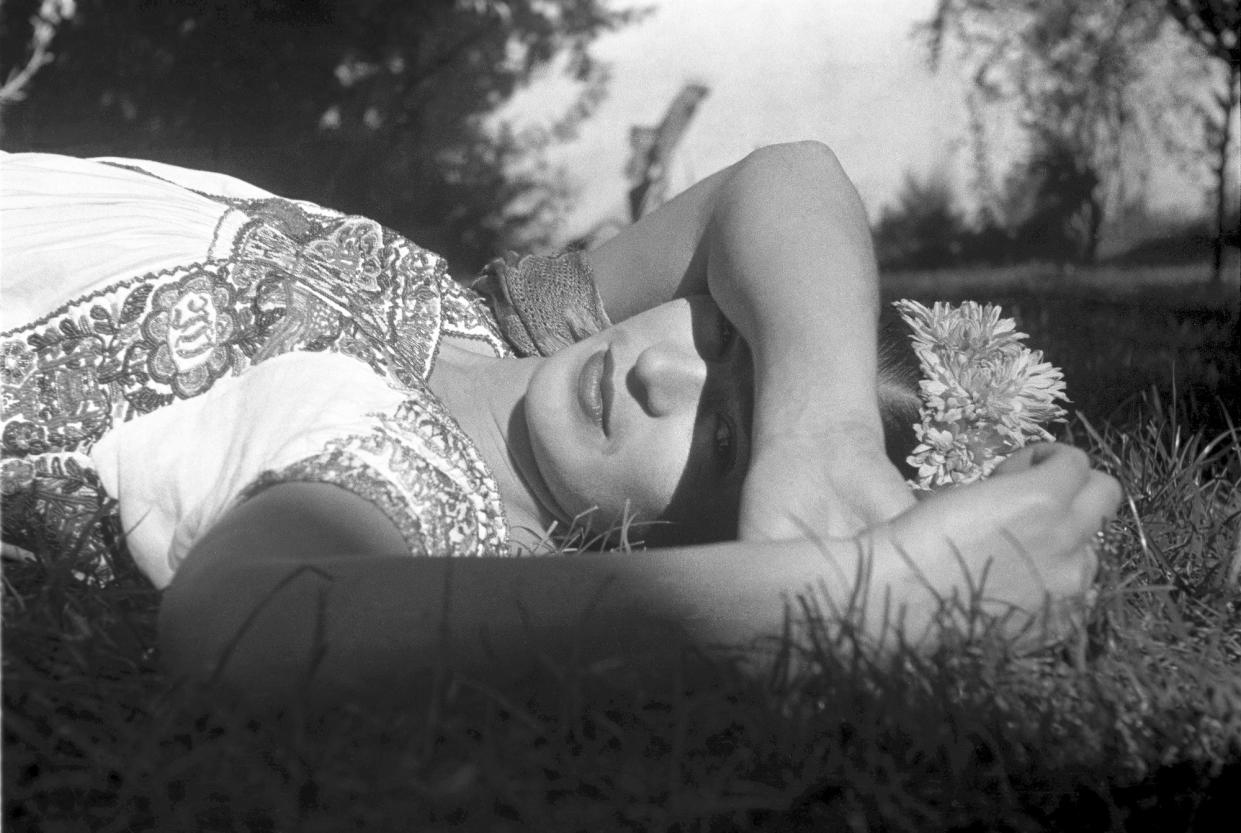‘Frida’ Review: This Raw Documentary Trusts Frida Kahlo to Speak for Herself

- Oops!Something went wrong.Please try again later.
- Oops!Something went wrong.Please try again later.
Editor’s Note: This review was originally published at the 2024 Sundance Film Festival. Amazon will release “Friday” on March 14.
One of the great tragedies of Frida Kahlo’s life is the fact that, for all her brilliance as an artist, she was often defined by the people whose orbits she shared. In the eyes of many, her primary role in history was being Diego Rivera’s wife, a source of inspiration and creative friction that propelled him to greatness as he painted his legendary murals. Her infamous affair with Leon Trotsky only added to the mystique of her image as a muse for male revolutionaries. It’s a wildly simplistic understanding of her life, of course, as Kahlo’s paintings are every bit as historically significant as Rivera’s. From her early embrace of Mexican folk art and Surrealist imagery (a label she came to vehemently reject, though much of her work remained within its parameters) to her unflinching depictions of female anatomy and malaise, Kahlo is a giant of the 20th-century art world.
More from IndieWire
Read Darren Aronofsky's Preface to Behind-the-Scenes 'Pi' Book
'Música' Review: A Delightful, Subversive Musical Comedy That Makes Synesthesia Cinematic
With the global cultural intelligentsia spending much of the past decade revising canons to ensure that underrepresented artists receive the status and accolades in death that often eluded them in life, the task of revisiting Kahlo’s life story loomed large. Carla Gutierrez’s “Frida” makes a formidable effort to do just that, crafting a narrative that squares Kahlo’s unimpeachable brilliance with the unavoidable fact that she spent much of her short and tragic life as a passive participant in other people’s stories. The documentary is a valiant effort that offers a much better introduction to Kahlo than many of us received in our art history classes, even if it sometimes falls short of capturing what made her special.
How does one begin to tell a new story about an artist whose rise and fall are so well-documented? In Gutierrez’s case, you let her speak for herself. “Frida” is comprised almost entirely of Frida Kahlo’s own words, with voiceovers from her extensive journals and personal correspondences providing context as the film ushers us from her childhood in Mexico through her multiple marriages, international success, and her ailing final years when she truly felt free. It’s a fitting narrative device that places Kahlo at the center of her own story, ensuring that discussions of her work and life choices are based in her own motivations, rather than anyone else’s interpretations of them.
On the surface, Kahlo’s life story can resemble one of victimhood. Burdened with chronic pain and limited mobility after experiencing a bus accident at the age of 18, Kahlo spent much of her adult life putting her husband’s ambitions before her own. Even as her own artistic talents flourished, she left her beloved Mexico for months at a time to accompany Rivera as he traveled through the United States to paint his now-iconic murals. Kahlo quickly became bored and drained by the travel, and was devastated by her husband’s infidelities. When they eventually divorced, she found herself forced to take on a taxing work schedule to financially support herself as a painter. As her physical conditions worsened, she later agreed to re-marry Rivera before spending her final years in ailing health and dying at the age of 47.
But Kahlo’s own words offer a different perspective on the story. She explains her loves and passions in ways that add context to her darkest moments and further illuminate her triumphs. In her words, her life was a gradual accumulation of freedom. She relished her financial independence, even if it came with a reduction in lifestyle and the heartbreaking process of selling all of her paintings. As her mobility declined, she found peace in the process of devoting her last remaining energy to painting. And when she finally went back to Rivera (with a long string of conditions), their time apart had given her a sense of independence that made their second marriage much more egalitarian.
While Kahlo’s eloquence provides an excellent foundation for the film, it can be disappointing that her art isn’t highlighted with the same prominence as her writing. Rather than show her actual paintings, the film relies on animated versions of them that bring her portraits to life. The execution is impressive, but it deprives viewers of the chance to see her work unvarnished while listening to her words. Perhaps the choice was made to add some motion into what otherwise could have been a static film that resembled a PowerPoint presentation. But there is something incomplete about a painting documentary that manipulates the actual work — especially when so much of the film’s thesis rests on the idea that Kahlo deserves to be remembered on her own terms.
Still, “Frida” offers an addition to Kahlo’s legacy that was long overdue. While it’s far from a definitive study of her achievements, the film brings the painter back to life in a manner sure to initiate further study from fans and novices alike. Given the film’s emphasis on letting Kahlo’s work stand on its own, sparking a flurry of renewed interest in the paintings that it reenvisions might be the ultimate sign that it achieves its goals.
Grade: B
“Frida” premiered at the 2024 Sundance Film Festival. Amazon MGM Studios will release the film later this year.
Best of IndieWire
Sign up for Indiewire's Newsletter. For the latest news, follow us on Facebook, Twitter, and Instagram.

